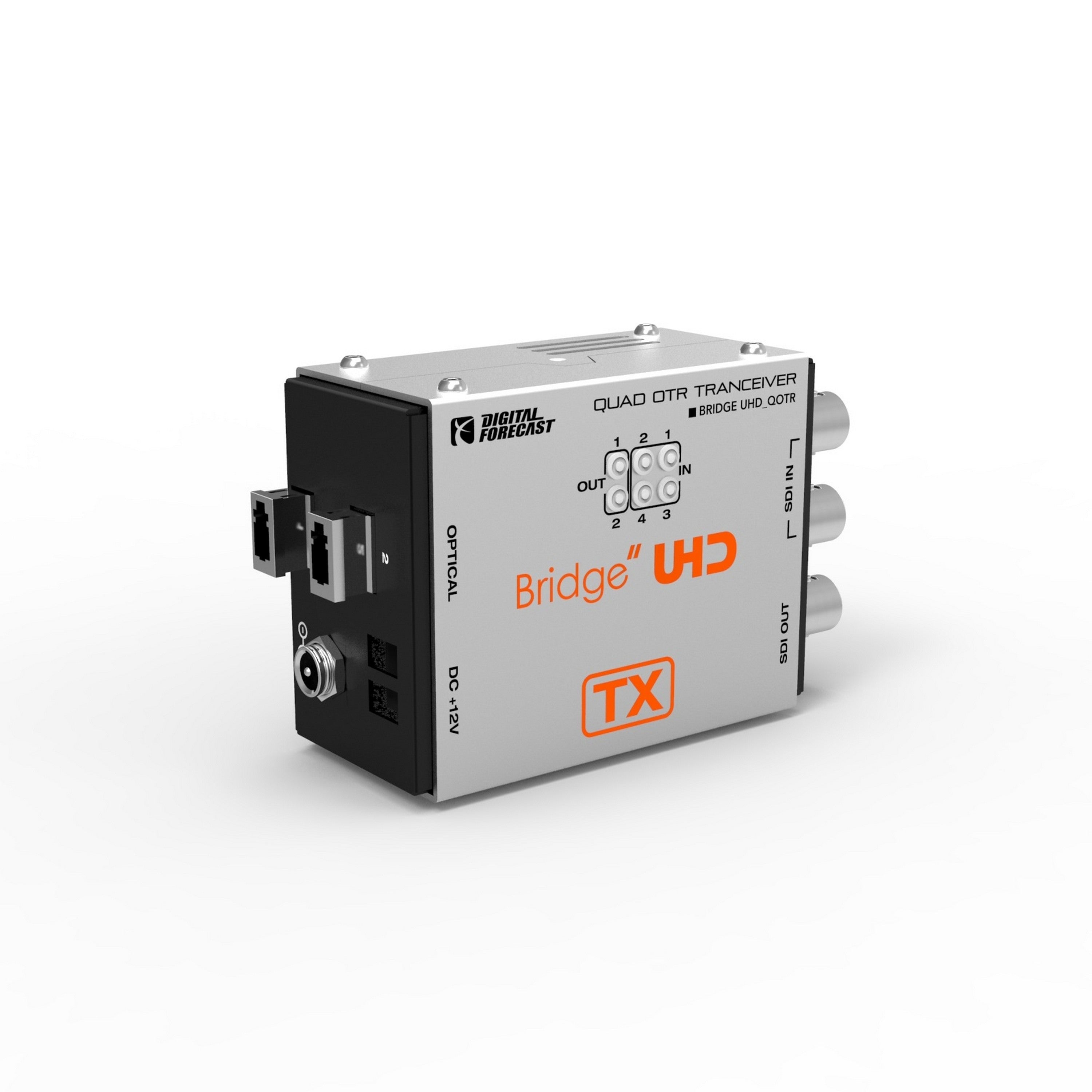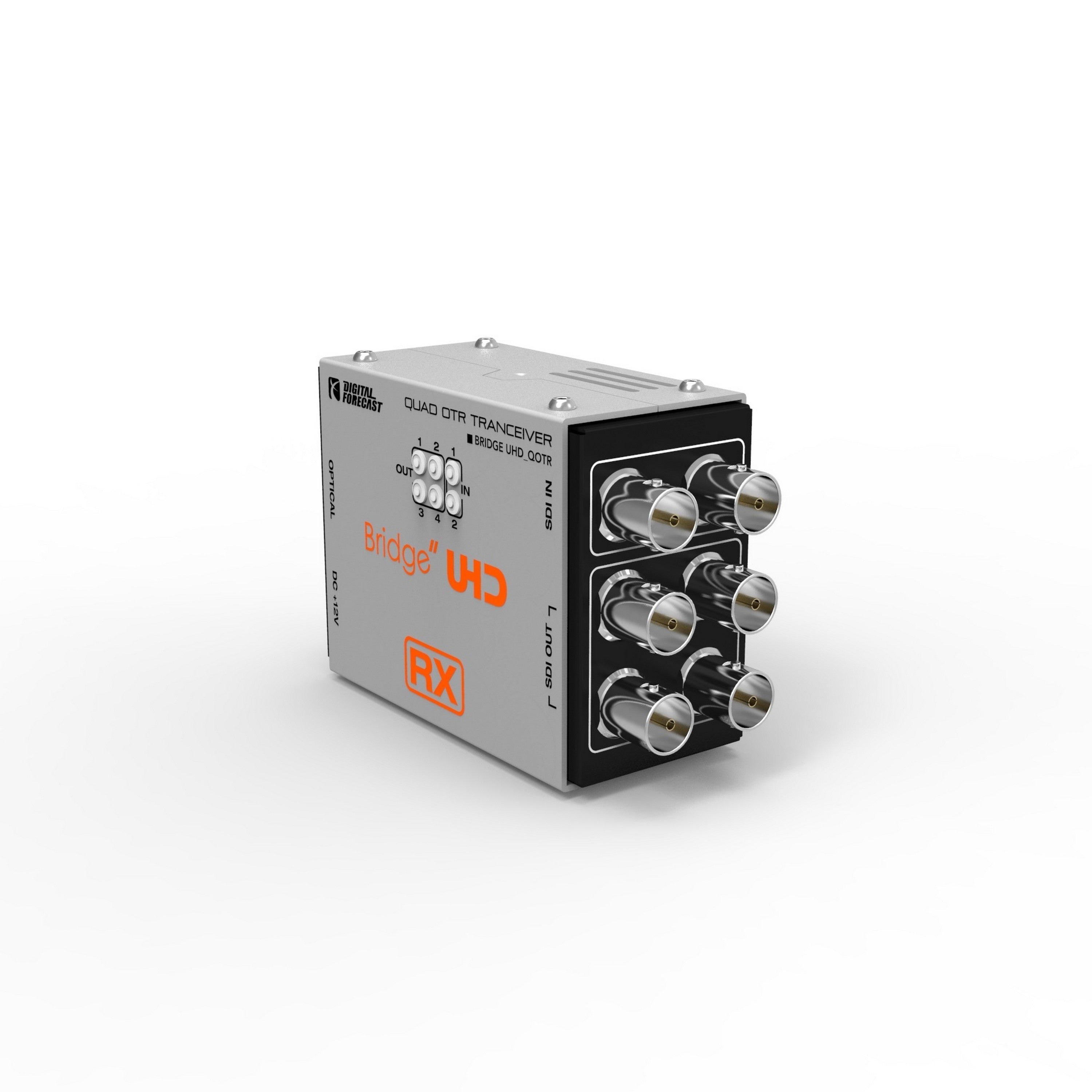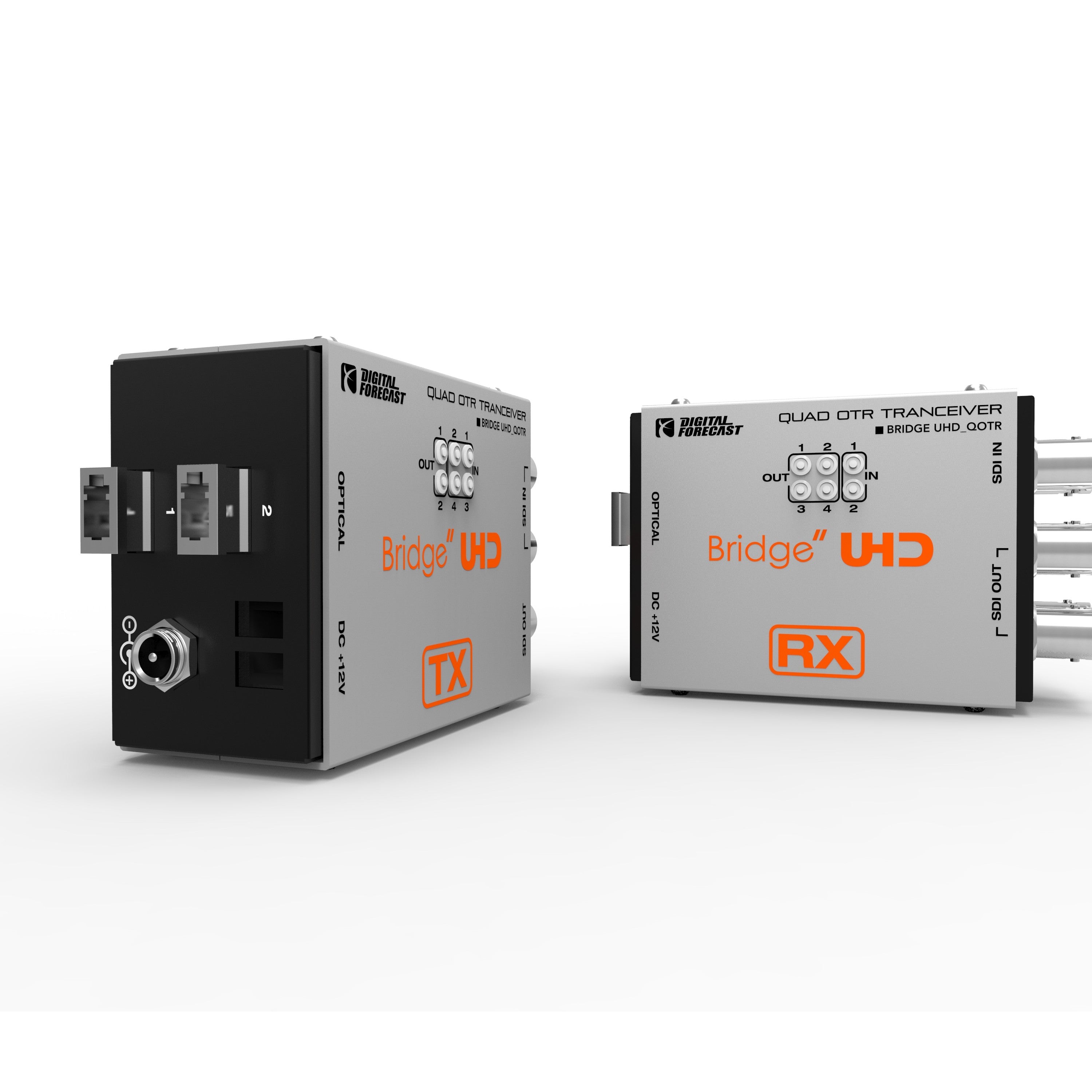The Bridge UHD_QOTR is an amazing device. It can convert four independent 3G SDI input signals into dual - core optical signals. This is a bi - directional transmission module. It can not only transmit four independent signals but also receive two channels of 3G SDI input. It's super versatile! It can transmit not only UHD standard signals but also separate signals like non - standard 3D signals and speed camera signals. Key features include: transporting Quad - Link 3G - SDI and 3G/HD/SD - SDI up to 10km; simultaneous bi - directional multi - channel optic extension with SDI Tx 4CH / Rx 2CH; support for UHD 4K (Quad 3G - SDI to Optic); support for standard SDI (SD, HD, 3G) formats; use of LC single - mode dual - core fiber; comes with SFP; and it runs on a 12V DC power supply (operational voltage range: 7 ~ 17V DC). Technical specs: It has dimensions of 79.1 x 59.2 x 37 (mm), weighs 165g for both TX and RX, has a power level of 5V ~ 17 VDC, power consumption of TX/RX 7.5/7.8 Watts (Max: 9/9 Watts), can handle humidity from 0 to 95% RH non - condensing, has a data rate of 3G, a signal level of 800mVp - p +/- 50m, and supports various digital video specs like 720P (60/59.94/50), 1080i (60/59.94/50), and 1080p (60/59.94/50) 3G.



Using the Bridge UHD_QOTR is quite easy. First, connect your 3G SDI input sources to the device. Then, connect the LC single - mode dual - core fiber for signal transmission. Make sure to use a 12V DC power supply within the 7 - 17V DC range. You'll be able to transmit and receive signals right away. When it comes to maintenance, keep it in a dry place with humidity between 0 to 95% RH, non - condensing. Don't expose it to extreme temperatures. If you need to clean it, use a soft, dry cloth. Also, regularly check the power supply and connections to ensure everything is working properly. If you encounter any issues, make sure to double - check the input signals and the power level.